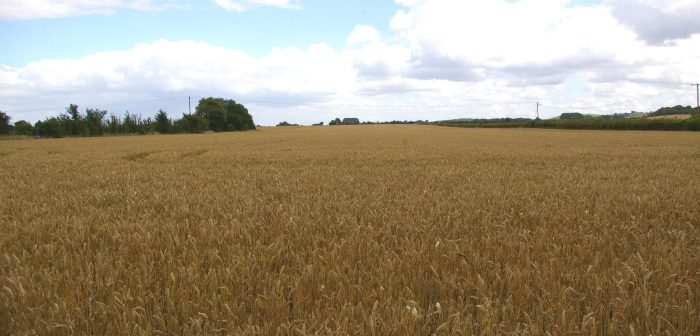50 growers have been selected to take part in the BASF Real Results Circle wheat fungicide trials.
Over the coming months these 50 growers, supported by BASF, will test Adexar and Librax against their choice of SDHI; on their farm, in their soil and in a way that conforms to their farm’s systems and drivers, in order to prove conclusively which is the best wheat fungicide at T1 and T2.
Tim Short, BASF Marketing Campaign Manager, Crop Protection said: “The trials are being conducted in partnership with BASF’s independent industry partners ADAS and AgSpace. Having this independent science behind the BASF Real Results Circle, using the Agronōmics approach, is a very exciting development as it sets our trials apart.
“Whilst the BASF Real Results Circle allows growers to learn about their farm, it also gives them the opportunity to be part of something bigger and this, coupled with independent scientific backing, will give the results more validity.”
Susie Roques, ADAS Crop Physiologist, said: “On-farm tramline trials and split field trials, like those in the BASF Real Results Circle, are being increasingly used by individuals and companies. The Agronōmics approach developed by ADAS and AgSpace with the British Geological Survey brings a new and unique scientific credibility to the design, management and statistical analysis of tramline trials.”
Agronōmics
Mrs Roques added: “Using Agronōmics, new digital techniques for farm-based research, we will provide the BASF Real Results Circle trials with scientific support to help growers design better trials as well as providing proper data analysis, which will ensure growers can have more confidence in the results than they would ever have had before.”
Over the past three years ADAS, funded by Innovate UK, has led the Agronōmics project, developing, with collaborators, the statistics and software to help run on-farm trials.
Mrs Roques said: “Agronōmics is about trial design, the way we analyse the data and about doing farm-scale research well. It is also about having a closer connection between researchers and growers, recognising that innovative ideas are just as likely to come from growers as scientists.
“Using Agronōmics to design the BASF Real Results Circle trials will help remove variance. It is crucial to make sure that the comparison is fair to start with and that the two areas of the field chosen are comparable. We know that there is spatial variation in fields and it is easy to come up with the wrong conclusion.”
Satellite data
The 50 growers are currently submitting the details of the wheat field where they want the trial to be carried out to BASF’s independent industry partner AgSpace, who will provide satellite data for these fields.
Soil brightness data, which shows up differences in soil type and normalised different vegetation index (NDVI) spectral reflectance data, which gives an indication of how big and how green the crop is, will be studied for each field. ADAS will then decide where in the field the trial should be situated in order to best remove spatial variance.
Mrs Roques added: “AgSpace will be supplying further NDVI images throughout the season. If the treatments make a big difference we may be able to see it on the satellite data. There will also be visits from BASF staff to assess disease and towards harvest AgSpace will be speaking to farmers about harvest protocol; how to harvest to get the best results.
“The 50 growers in the BASF Real Results Circle will discover a lot more than simply the best fungicide – they will get great insight into unlocking yield potential. We will be defining the yield potential for the crop based on site data; gathering information on the soil and the weather at the site.
“The growers will submit grab samples pre-harvest, to see how the treatment has had an effect on yield as well as calculating the Harvest Index (HI). At the end of the trial, growers will get a detailed independent report on the crop, with results and yield potential/barriers.
“Of course, having 50 sites in different regions across the UK means we will be able to see the effect of environmental factors. It may be the products will shine in some areas more than others.
“It will also be possible to see how certain situations, for example extremes of weather, influence the treatments. By using the statistical approaches we have developed in the Agronōmics project we will do cross site analyses of all the results so we will be able to state the level of confidence we can have in the results.”




